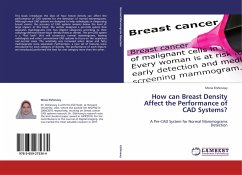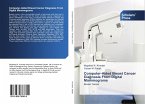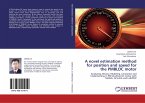This book introduces the idea of how breast density can affect the performance of CAD systems for the detection of normal mammograms. Although most CAD systems are designed to help radiologists in diagnosing breast cancer, the accuracy of CAD systems remains below the level of large impact. In this book, the author designed a pre-CAD system that separates mammograms into two disjoint categories according to their radiology-defined breast tissue density (fatty or dense). The pre-CAD system is a "first look" that will screen-out normal mammograms, leaving radiologists and other conventional CAD systems to focus on the suspicious non-normal cases. The sensitivity was increased when dense and fatty mammograms were separated. Furthermore, a new set of features were introduced for each category of density. The performance of each feature set introduced performed the best for one category more than the other.








